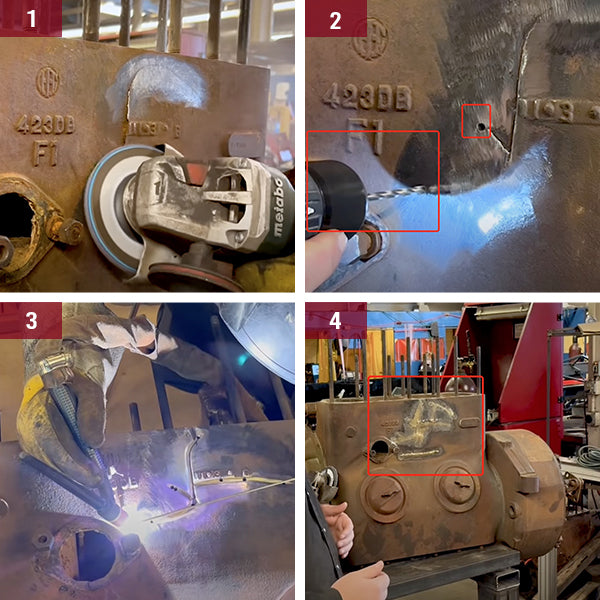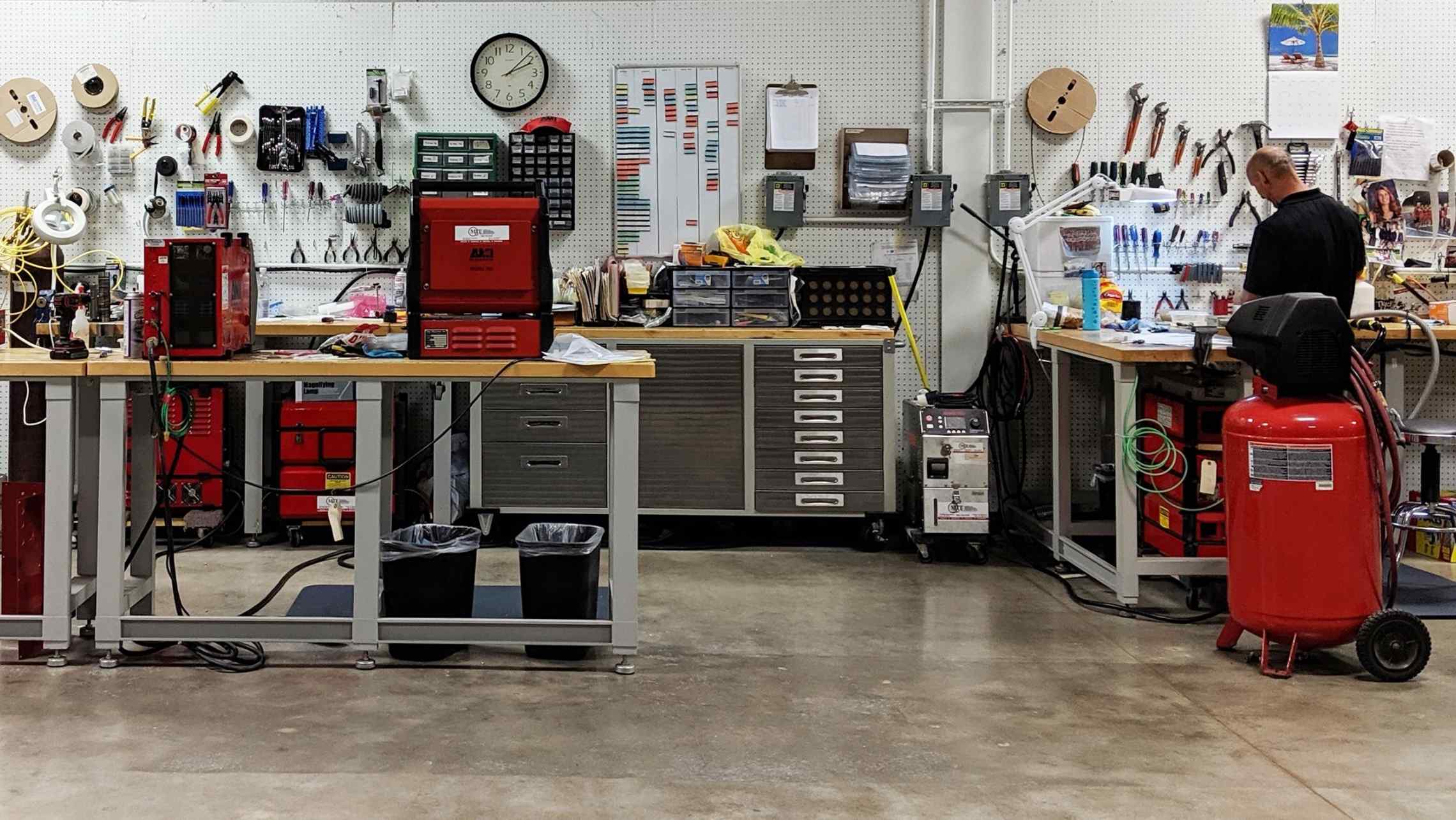What triggers weld porosity and how Belgrade Welding handles them
Usual Welding Repair Issues and How to Address Them Efficiently
Welding repair services usually encounter a series of issues that can threaten the stability of the final product. Typical problems consist of insufficient infiltration, porosity, and misalignment, amongst others. Each problem provides distinct difficulties that call for specific approaches for resolution. Recognizing these issues is necessary for welders aiming to improve their skills and results. This discussion will check out these common welding repair issues and efficient approaches to address them.
Poor Infiltration
Insufficient infiltration happens when the weld steel stops working to totally fuse with the base product, leading to weak joints and potential structural failures. This concern often originates from not enough warmth input, inaccurate electrode angle, or incorrect welding rate. Welders might encounter poor penetration as a result of a miscalculation of the needed parameters for a details product density or kind. In addition, contamination on the base product's surface can prevent reliable bonding, intensifying the problem. To address poor penetration, welders should guarantee proper setups on their devices and keep a tidy work surface. Routine inspection of welds is advised to identify any kind of deficiencies early, enabling for prompt modifications and the avoidance of compromised structural stability in bonded settings up.
Porosity
Porosity is an usual problem in bonded joints that manifests as small gas bubbles entraped within the weld steel. This flaw can compromise the honesty of the weld, resulting in reduced toughness and possible failing under stress and anxiety. Montana Mobile Welding and Repair Belgrade Welding. Porosity typically develops from contamination, dampness, or inappropriate welding strategies, which allow gases to escape into the molten weld swimming pool. To attend to porosity, welders must ensure appropriate surface area preparation, preserve a tidy functioning setting, and make use of ideal welding specifications. Furthermore, selecting the ideal filler product and securing gas can alleviate gas entrapment. Normal inspection and screening of welds can assist recognize porosity early, assuring prompt restorative activities are taken, thus protecting the high quality and integrity of the bonded structure
Misalignment
Misalignment in welding can emerge from different variables, including inappropriate configuration and thermal growth. Understanding the origin causes is necessary for efficient resolution. Several modification techniques are readily available to realign components and guarantee structural honesty.
Sources of Misalignment
Welding misalignment commonly comes from a selection of underlying concerns that can jeopardize architectural integrity. One main cause is inappropriate fit-up of components prior to welding, which can cause voids and uneven surface areas. Variants in thermal growth during the welding procedure can likewise result in distortion, especially if the materials being signed up with have various coefficients of growth. Furthermore, insufficient fixturing and securing might stop working to hold elements firmly in area, causing motion throughout welding. Inadequately conserved tools, consisting of welding makers and tools, might present disparities in the weld grain, additional adding to misalignment. Driver error, stemming from not enough training or experience, can likewise play a considerable duty in creating misaligned welds.

Improvement Strategies Offered
Addressing misalignment properly needs a combination of restorative strategies tailored to the certain problems handy. One typical technique is making use of jigs or fixtures to hold components in the appropriate position throughout welding, making sure consistent alignment. Additionally, pre-heating the materials can help in reducing distortion and boost fit-up. For considerable imbalance, mechanical realignment methods, such as using hydraulic jacks or clamps, can be employed to remedy the setting before welding. Post-weld warmth treatment may also be necessary to ease anxieties triggered by imbalance. Mindful assessment and adjustment during the configuration phase can stop misalignment problems from coming to be significant issues, promoting a smoother welding procedure and enhancing overall structural integrity.
Distortion
Distortion is an usual difficulty in welding that can occur from various variables, consisting of irregular heating and air conditioning. Understanding the root causes of distortion is crucial for carrying out effective avoidance methods. Resolving this problem not only enhances architectural honesty yet also enhances the overall quality of the weld.
Causes of Distortion
When subjected to the extreme warmth of welding, products usually undergo changes that can cause distortion. This phenomenon primarily occurs from thermal expansion and contraction during the welding procedure. As the weld location heats up, the material increases; upon cooling, it gets, which can create inner stress and anxieties. On top of that, unequal heating across a workpiece can worsen these stresses, leading to warping or bending. The kind of product also plays a considerable function; steels with differing thermal conductivity and coefficients of development might respond in different ways, causing unpredictable distortions. Inadequate joint design and insufficient fixturing can add to imbalance throughout welding, boosting the probability of distortion. Comprehending these reasons is essential for effective welding repair work and avoidance methods.
Avoidance Techniques
Effective prevention techniques for distortion throughout welding emphasis on controlling warm input and making sure proper joint style. Keeping a consistent warm input helps to lessen thermal growth and contraction, which can lead to distortion. Making use of strategies such as pre-heating the workpiece can likewise lower the temperature slope, promoting consistent heating. Furthermore, picking appropriate joint styles, such as T-joints or lap joints, can improve security and lower stress and anxiety focus. Applying correct fixturing to protect the workpieces in position better help in maintaining placement during the welding process. Finally, staggered welding sequences can distribute heat much more equally, preventing localized distortion. By applying these techniques, welders can substantially lower the possibility of distortion and enhance the total high quality of their welds.
Breaking
Fracturing is a typical problem come across in welding repairs, usually resulting from different factors such as inappropriate cooling prices, material choice, or inadequate joint preparation. The incident of cracks can considerably compromise the stability of the weld, leading to potential failings throughout operation. To address this issue, welders need to initially evaluate the source, ensuring that materials are compatible and suitably picked for the specific application. Furthermore, managing the air conditioning rate throughout the welding process is crucial; quick air conditioning can cause stress and lead to cracking. Correct joint style and preparation also add to decreasing the danger. Implementing these methods can enhance weld top quality and longevity, inevitably minimizing the chance of breaking in completed weldments.

Incomplete Blend
A considerable problem in welding repair services is insufficient blend, which occurs when the weld metal does not sufficiently bond with the base material or previous weld passes Montana Mobile Welding and Repair Belgrade Welding - Montana Mobile Welding and Repair Belgrade Welding. This defect can lead to weak points in the joint, possibly jeopardizing the stability of the welded structure. Aspects adding to insufficient fusion consist of inadequate warm input, incorrect welding strategy, and contamination of the surface areas being joined. To resolve this issue properly, welders need to assure proper pre-weld cleansing and surface area preparation, along with change their welding criteria to achieve adequate infiltration and blend. Routine evaluation during the welding procedure can likewise help recognize incomplete combination early, permitting for timely restorative procedures to boost the overall top quality of the weld
Overheating
While welding repair services can improve structural integrity, overheating presents a significant challenge that can bring about product deterioration. Excessive heat during welding can alter the mechanical properties of metals, resulting in minimized strength, raised brittleness, and warping. This sensation is specifically important in high-stress applications where structural integrity is paramount. Determining overheating can include visual evaluations for discoloration or distortion, along with keeping an eye on temperature during the welding procedure. To minimize the threats associated with getting too hot, welders need to use suitable techniques, such as controlling heat input, adjusting traveling speed, and utilizing suitable filler materials. Furthermore, implementing pre- and post-weld warm therapies can aid recover product homes and boost the general top quality of the fixing, guaranteeing lasting efficiency and safety.
Regularly Asked Inquiries
What Are the Common Signs of a Welding Problem?

Just How Can I Check My Welds for Top quality?
To evaluate welds for high quality, one can make use of visual examinations, ultrasonic screening, and radiographic methods. Each strategy ensures structural integrity, recognizes flaws, and verifies adherence to defined standards, eventually enhancing the reliability of the bonded joints.
What Security Preventative Measures Should I Take While Welding?
When welding, one ought to prioritize safety and security by wearing suitable personal safety tools, guaranteeing proper air flow, protecting flammable products away, keeping a clean work space, and understanding environments to avoid mishaps and injuries.
Can I Fix a Weld Without Remodeling the Entire Joint?
Repairing a weld without redesigning the entire joint is feasible, depending upon the damages (Montana Mobile Welding and Repair Belgrade Fabrication). Techniques such as grinding, adding filler product, or making use of a welding procedure can efficiently attend to particular flaws while protecting the surrounding structure
What Equipment Are Essential for Reliable Welding Repairs?
Vital devices for effective welding repair services include a welding equipment, cable brush, mill, safety gear, clamps, and filler products. Each device plays a vital duty in making certain high quality and safety and security during the repair process. Porosity normally arises from contamination, wetness, or improper welding techniques, which permit gases to escape right into the liquified weld swimming pool. Poorly conserved equipment, including welding devices and tools, might introduce variances in the weld grain, additional contributing to misalignment. When subjected to the extreme heat of welding, materials typically go through modifications that can lead to distortion. Splitting is a common problem run into in welding repair services, frequently resulting from various aspects such as incorrect cooling prices, material selection, or poor joint prep work. A considerable problem in welding repair services is incomplete combination, which occurs when the weld steel does not appropriately bond with the base material or previous weld passes.